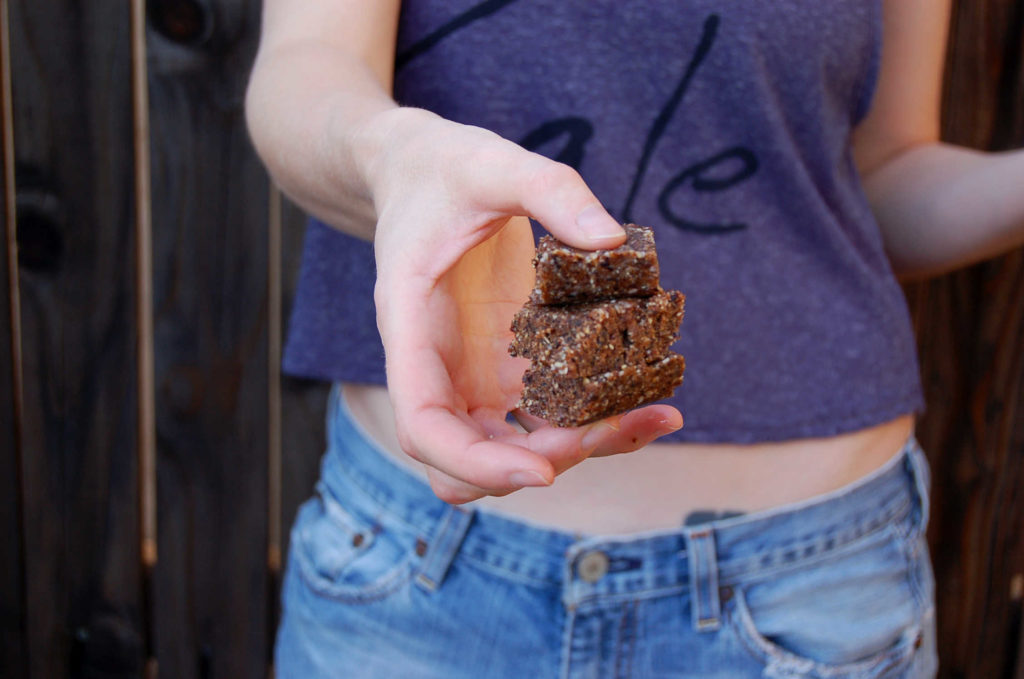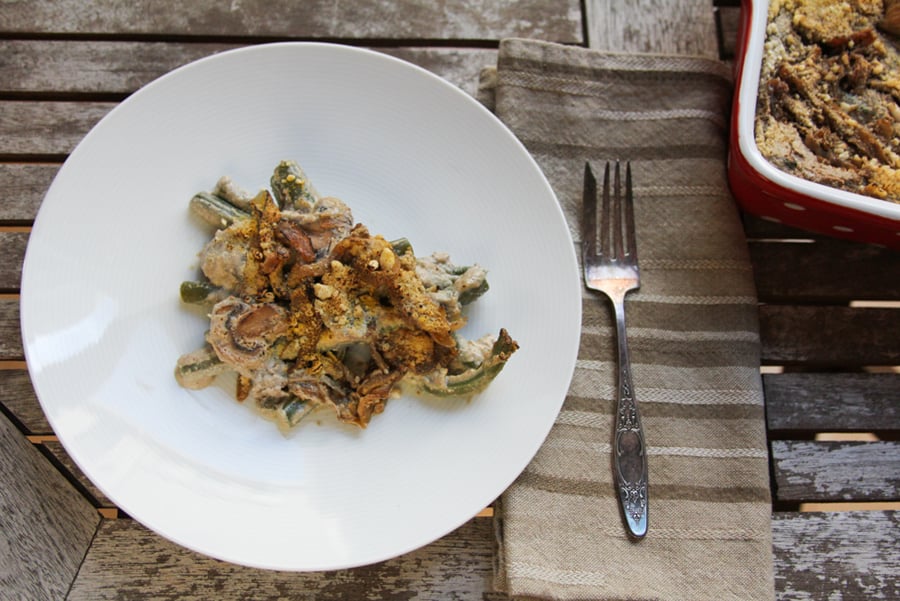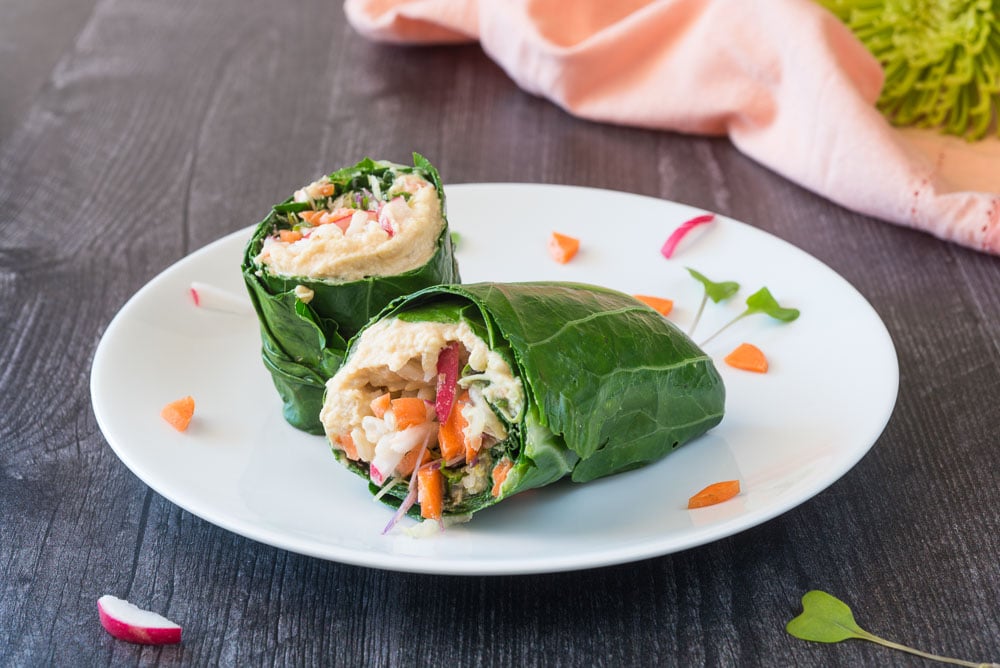Dark Leafy Greens: Benefits, How to Cook, Store, and More

By Team Dirty
May 19, 2023,
By Team Dirty
May 19, 2023,
Leafy greens are versatile AF. You can toss them in salads, blanch, steam, braise, or boil them, throw ‘em by the handful into soups or smoothies, or even munch on them raw like a cute rabbit.
These lovely leaves have an array of nutritional benefits. According to NutritionFacts.org, the calcium in dark green leafy vegetables is more effectively absorbed by the body than cow’s milk, and the potassium they contain may be anti-inflammatory and prevent strokes and heart disease. This is just the beginning of their benefits and only one reason we’re wild about leafy greens!
How much greens should we be eating?
Plant based doctors recommend two to six servings of greens daily. We keep it simple and try to incorporate them into most of our meals. Generally speaking, a serving is one cup cooked or two cups lightly packed raw greens.
Shopping for dark leafy greens
You’ll want to look for crisp, perky greens that are not wilted, soggy, or show signs of yellowing. Buy organic when you can, especially when it comes to spinach, kale, collards, and mustard greens.
How to prep & store those gorgeous greens
Watch the video above to learn how to prep and store greens so they last up to a week!
How to blanch greens
Fill your stockpot halfway with water. Add a teaspoon of salt if desired, and bring water to a boil. While waiting for it to boil, prepare an ice bath in a large bowl. Then, wash your greens and remove any large stems. Place greens into the pot of boiling water and boil until they wilt and the color brightens. This takes about 30 seconds for small or tender greens like spinach. Kale and collard greens may take up to three minutes. Once the greens wilt, drain them and dunk into the ice water. Let chill for about the same amount of time you cooked them. Remove the greens and squeeze out the excess water as best you can. Store in an airtight container or plastic bags.
What about oxalates in greens?
Oxalates are natural compounds found in plants and created naturally in our bodies as a waste product. In high amounts, they can reduce absorption of important nutrients or impact kidney function. The risk is low for most people, but if you’re concerned about oxalates, varying types of greens and cooking a portion of your daily intake can help. The enzyme that releases oxalates is deactivated by cooking. Here’s a helpful video with more information. Low-oxalate leafy greens include kale, arugula, mustard, turnip, collards, bok choy, and watercress.
Tips to getting more leafy greens in your diet
- Add raw greens to smoothies or juices
- Chop up finely, throw in Old World Spaghetti Sauce, and serve over noodles
- Add a handful to your favorite plant based soups either before or after cooking
- Sauté or steam greens and serve as a simple side dish
- Add sautéed greens to sandwiches like the Crispy Tofu Club Sandwich
- Add a handful to a broth bowl or rice bowl
- Use blanched collard leaves instead of tortillas when making wraps or burritos.
- Chop some greens and add them to your favorite tofu scramble
- Toss roasted or steamed potatoes with chopped greens and a sprinkle of Walnut Parm
- Mix them with lettuce in your favorite salad and drizzle with Orange Miso Dressing
Types of dark leafy greens
Spinach
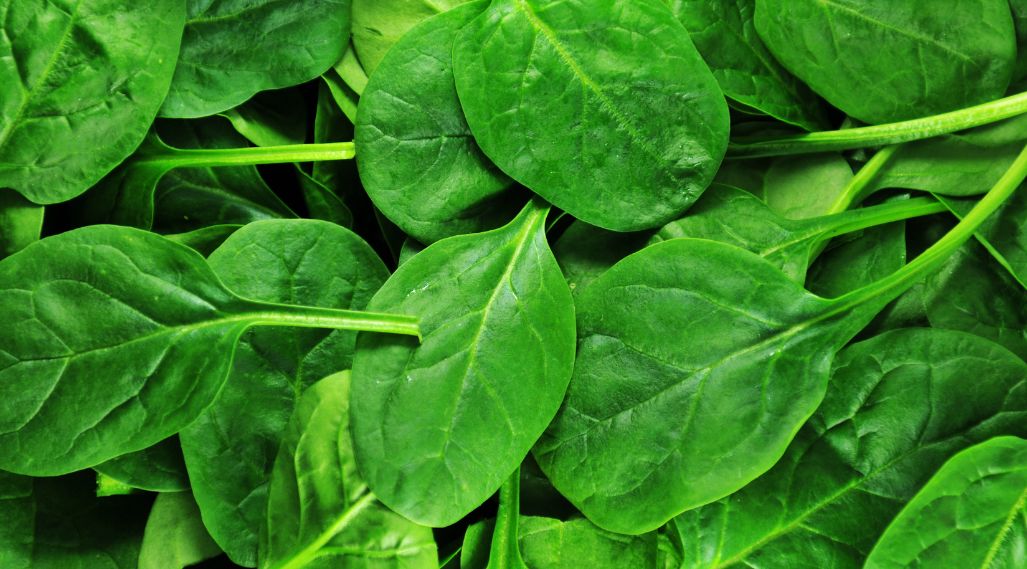
Spinach would likely win the most popular leafy green award with its mild taste. Spinach is an excellent source of vitamins A and K, which are important for healthy eyes and bones. It also contains high levels of iron, essential for red blood cell production, energy, and metabolism. Plus, it has tons of antioxidants, which help protect the body against damage from free radicals. Hell yeah!
Popular spinach varieties
Savoy spinach has crinkled and curly leaves with a tender texture and slightly bitter taste. It’s often cooked and used in salads, soups, sautés, and stir-fries.
Baby spinach is any variety of spinach harvested while it’s young and tender. Mild and sweet, it’s perfect served raw in sandwiches and salads.
Smooth or flat-leafed has a milder flavor than savoy, making it a popular choice for smoothies, salads, and sandwiches.
Ways to use spinach
Spinach can be used raw or cooked in just about every which way. Since it typically has a mild flavor, it’s our top choice for smoothies. You can hide handfuls of it in a smoothie with little change in flavor. It’s also great sautéed and added to soups or casseroles.

Our favorite recipes using spinach
- Spinach, Mushroom & Artichoke Chickpea Frittata
- Spinach Artichoke Dip
- Garlicky White Bean and Spinach Quesadillas
- Spinach Tofu Scramble
- Spanish Chickpea and Spinach Stew
- Nutty Banana-Berry Smoothie
- Handheld Spanakopita Pies
- Cheesy Spinach Rice
- All recipes using spinach in Clean Food Dirty Girl
Check out Spinach Strong and Simple Spinach Strong, our vegan oil-free meal plans where spinach is the star of the show!
Storing spinach
Refrigerator: If you buy spinach by the bundle, rinse it as soon as you get home. Spin dry in a salad spinner or pat dry with a towel. Store loosely in a breathable bag or airtight container for up to a week.
Freezer: Up your greens game by spreading washed and dried spinach on a cookie sheet and placing in the freezer for a few hours. After frozen, store in a bag in the freezer, and voilà! You have spinach to toss into smoothies or soups without worrying about it withering away in the produce drawer.
Kale

Kale is a cruciferous leafy green and is just as versatile as spinach, but can skew slightly more bitter in taste.
It’s another highly nutritious green rich in vitamins A, C, and K, as well as iron and calcium. Kale also contains various antioxidants like flavonoids and carotenoids, which help reduce inflammation and protect against chronic diseases. One impressive study suggests kale is so effective it can significantly reduce cholesterol and high blood sugar in just a couple of weeks.
Popular kale varieties
Curly kale is one of the most common varieties. It has tightly curled leaves and is slightly bitter. You’ll find it chopped in salads, added to sautés and stir-fries, or roasted or dehydrated to make kale chips.
Lacinato kale, also known as Tuscan kale or dinosaur kale, has long, dark green leaves with a bumpy texture. It’s sweeter than its curly BFF and is popular used raw in smoothies and salads. It also does well in soups.
Red Russian kale has broad, frilly leaves with bright purple stems and veins. It’s mild in flavor, making it a perfect addition to salads, stir-fries, and smoothies.
Ways to use kale
Kale is a versatile leafy green and can be in smoothies and salads, as well as everything from soups to stews.
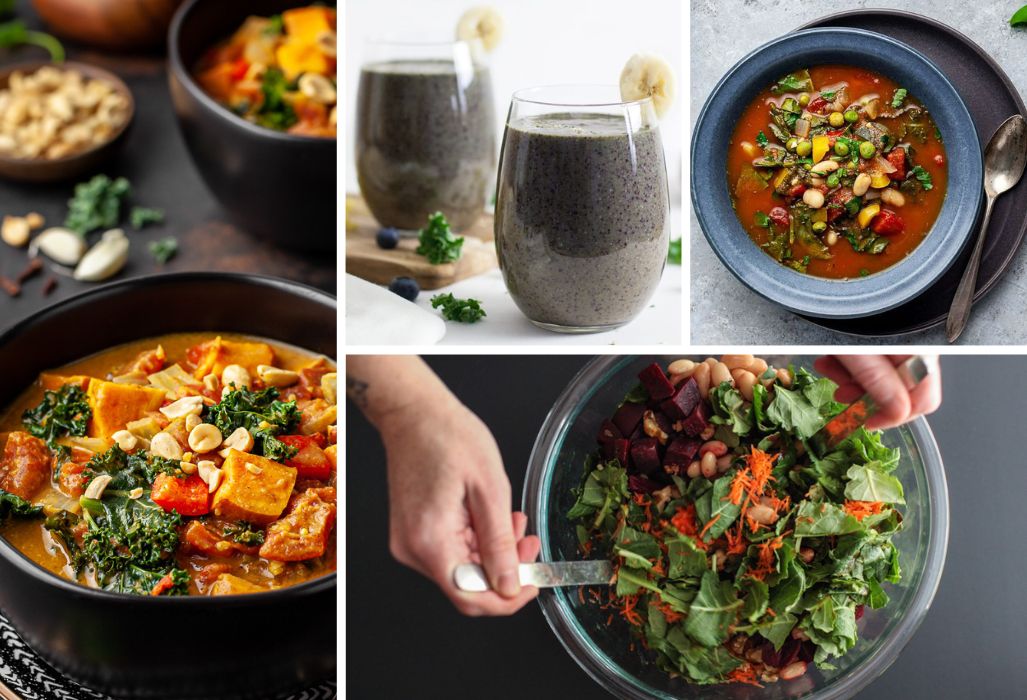
Our favorite recipes using kale
- Massaged Kale Salad
- Lemon Blueberry Smoothie
- Wilted Kale
- Garlicky Beet and Kale Salad
- Veggie-Packed Kale & Cannellini Soup
- West African-Inspired Peanut Stew
- All recipes using kale in Clean Food Dirty Girl
We love kale so much that we created a Kale Yeah Plant-Based Meal Plan. We even eat kale for breakfast. Say what? Check out our Gluten-Free Porridge to level up your plant based breakfast game.
Collard greens

Collard greens belong to the Brassica family and are popular in Southern American cuisine. They have a hearty texture and a slightly bitter, earthy flavor.
Collard greens are a good source of vitamins A, C, and K, as well as calcium and iron. They also contain a high amount of fiber, which helps to promote healthy digestion. Collard greens are especially protective against the nastiest type of breast cancer in African American women. Talk about a superfood!
Popular collard varieties
Georgia collards are the most popular and widely available variety. They have large, dark green leaves that are slightly crinkled with a thick texture.
Vates collards have comparatively smaller leaves that are smooth and dark green, with a slightly milder flavor. Vates collards are favored for their tenderness and are well-suited for steaming or stir-frying.
Morris Heading collards have elongated leaves that form a loose, open head. This variety is known for its sweetness and tenderness. Morris Heading collards can be used cooked dishes and raw.
Ways to use collard greens
Collard greens are often notoriously cooked with bacon grease or tons of butter, but you can make them without oil or animal products with a little help from Clean Food Dirty Girl. Their sturdy leaves make them perfect for blanching and using as wraps. They’re also great chopped and added to casseroles, soups, and more.

Our favorite recipes using collard greens
- Smoky Collard Greens
- Rainbow Fried Rice Collard Wraps
- Coconutty Chickpea Rice & Veggie Collard Wraps
- Country Collard Greens
- Garlic Herb Tahini Collards Salad
- Southern Black Eyed Peas and Extra Cheesy Grits & Greens
- Lemon Garlic Collard Greens
- All recipes using collards in Clean Food Dirty Girl
Nothing says down south like collard greens. Southern Soul and Southern are two plant-based meal plans featuring these leaves of love.
Storing collard greens
Refrigerator: Rinse and dry collard greens and store in a breathable bag or container for 5-7 days.
Freezer: Blanching (see below) and freezing collard greens helps to preserve their nutritional value and allows you to enjoy them whenever you want. Blanched and frozen collards can be stored in the freezer for up to 12 months. However, we recommend using them within 6-8 months for optimal flavor and quality. When ready to use, you can cook them directly from frozen. They can be added to soups, stews, stir-fries, or other cooked dishes without thawing.
Pro tip: We love using collard greens in our plant-based meal plans to wrap up some serious yum! Here’s how to do it:
Arugula
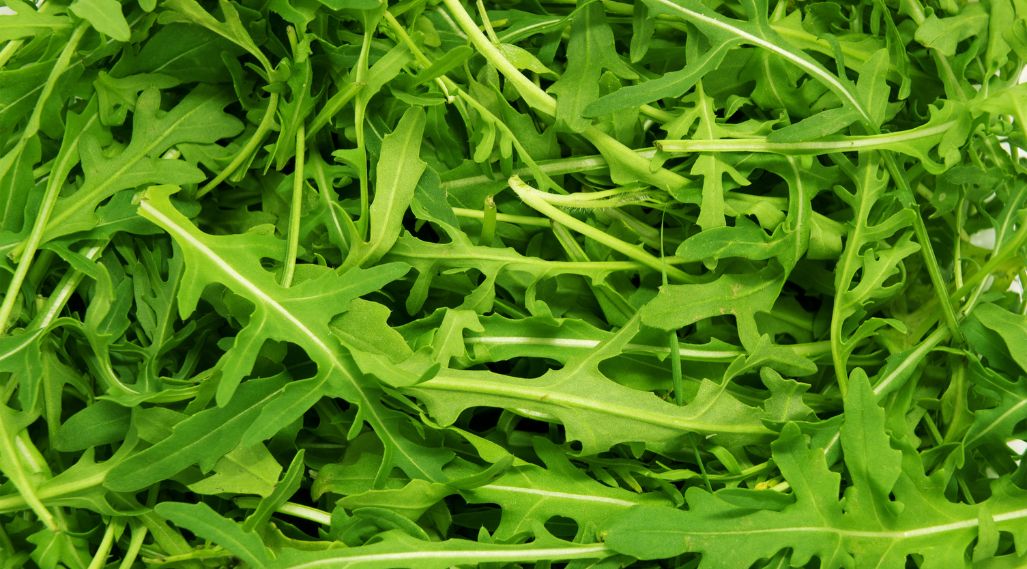
Arugula, or rocket or rucola, is a peppery, slightly bitter green often used in salads and sandwiches.
It’s low in calories but high in vitamins A, C, and K, as well as calcium and iron. Arugula also contains high levels of nitrates, which can help to improve exercise performance and reduce blood pressure.
Popular arugula varieties
Standard arugula is widely available and is known for its elongated, deeply lobed leaves. It has a bold, peppery taste and is commonly used in salads, sandwiches, and as a pizza topping.
Italian arugula, also known as rucola selvatica in Italian, has tender leaves and is milder than standard arugula. It’s often used in Italian salads and pesto.
Baby arugula refers to young, tender leaves harvested early in the growing season. Its mild flavor makes it versatile, and it can be used in salads, sandwiches, and peppery smoothies.
Wasabi arugula has small, rounded leaves with a distinct wasabi-like flavor. It offers a spicy kick which makes it a popular choice for adding heat and flavor to salads and sandwiches.
Ways to use arugula
We love using raw baby arugula in salads. Simply toss and serve!
Steaming arugula is a super-fast option and is perfect for those nights you want to add a peppery punch to your meal. Simply boil a pot of water, add arugula to the steamer basket, cover with a lid, and steam for about 1-2 minutes until the leaves are wilted but still a vibrant green. Remove from the heat, season with salt and pepper, and serve.
Traditional sautéed arugula is always a good choice, and you don’t need the oil! Put a pan over medium-high heat and add minced garlic and/or shallots and a splash of water while it warms. Once the pan is hot, throw in the arugula and toss gently until wilted. This should take about 1-2 minutes. Add seasoning or a splash of vinegar, and serve!

Our favorite recipes using arugula
- Grilled Bechamel, Pear & Baby Arugula Sandwich
- Strawberry Arugula Salad
- Tuscan Cannellini Bean & Arugula Broth Bowl
- Red Lentil Arugula Soup
- Loaded Crispy Flatbread with Arugula & Kalamata Olives
- All recipes using arugula in Clean Food Dirty Girl
Storing arugula
Refrigerator: Wash and dry your greens as soon as you get home from the grocery store. Keep in an airtight container or produce bag for up to a week.
Freezer: We don’t recommend freezing arugula.
Pro tip: You can revive limp arugula by trimming the stems and placing them in a cold water bath for a few minutes.
Chard

Chard, also known as Swiss chard or silverbeet, belongs to the beet family. It’s known for its vibrant, colorful stems and large, glossy leaves. Swiss chard is similar to spinach in taste and texture.
Chard is an excellent source of vitamins A, C, and K, as well as magnesium and potassium.
Popular chard varieties
Bright lights chard is a popular variety also known for its colorful stems, which come in shades of red, orange, pink, yellow, and white. The leaves are dark green with a slightly earthy and mild flavor.
Ruby red/rhubarb chard has red stems and dark green leaves. It offers a slightly stronger flavor compared to other chard varieties and adds a beautiful pop of color to dishes.
White Silver chard, also known as white-stemmed chard, has pale white or cream-colored stems and dark green leaves. It has a mild and slightly sweeter flavor compared to other varieties.
Ways to use chard
We love blanching chard. Simply place the chard leaves in a large mixing bowl and pour boiling water over them. Let sit for about a minute, then remove the leaves with tongs and place them onto a clean kitchen towel to absorb any liquid. Carefully pat the leaves dry and use them for your next plant fueled wrap.
Braising chard is a quick and tasty option.

Our favorite recipes using chard
- Roasted Kabocha Tacos
- Swedish Yellow Pea Soup (Ärtsoppa)
- Cold-Blasting Plant Based Garlic Soup
- Minty Green Cacao Smoothie
- All recipes using chard in Clean Food Dirty Girl
Storing chard
Refrigerator: Wash and dry your greens when you get home from the grocery store. Store in an airtight container or produce bag for about a week.
Freezer: Pack blanched chard tightly into silicone muffin cups. Freeze overnight, then pop your “chard pucks” out and store them in an airtight container or freezer bag. The pucks are perfect for tossing into a hearty soup or sautéing.
Beet greens

Beet greens are the leafy green tops of beets. These greens are not only edible but also highly nutritious.
Beet greens are packed with nutrients like vitamins A, C, and K, as well as minerals such as iron, calcium, magnesium, and potassium. They also contain fiber and antioxidants.
Popular beet greens varieties
Bulls blood are known for their deep red stems and leaves. The foliage has a sweet and earthy flavor and adds a vibrant red color to dishes.
Detroit dark red beet greens have a mild flavor and pair well with various dishes.
Chioggia beets are known for their distinctive pink and white concentric rings on the roots, and their greens are also flavorful with a slightly sweet taste.
Golden beet greens have a mild and slightly sweet flavor. They can be used as a colorful addition to salads or cooked dishes.
Ways to use beet greens
Beet greens can be used just like spinach and chard. They are slightly tougher and more fibrous than spinach, so keep that in mind when preparing.
Storing beet greens
Refrigerator: Cut the leaves at the base of their stems to remove from the beets, rinse, and dry. Store the roots separately from the greens.
Freezer: We suggest blanching beet greens before freezing. Frozen beet greens are best used in cooked dishes versus raw ones, as their texture will change once thawed.
Dandelion greens
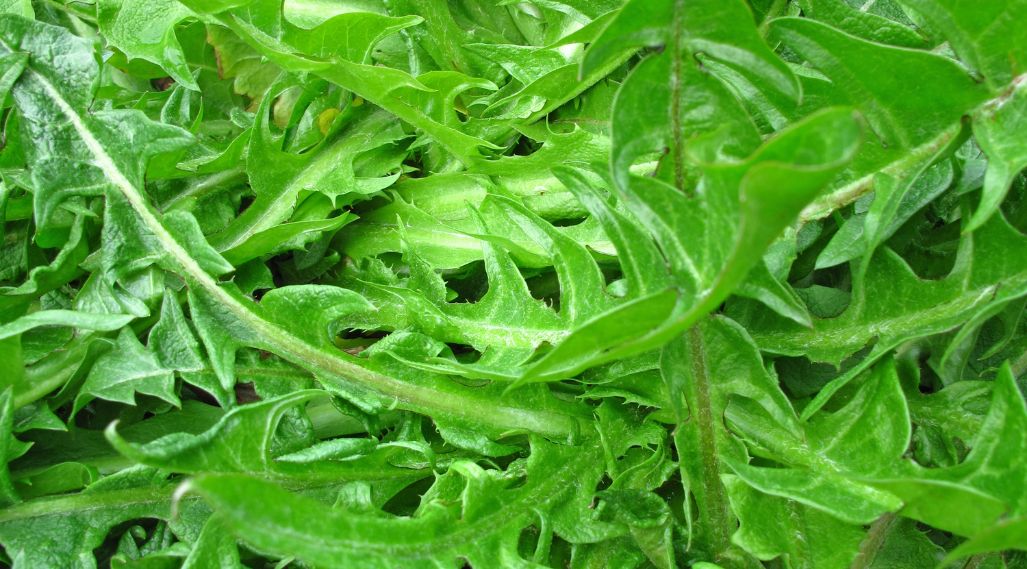
You know you’re adulting when you’re considering eating what you likely grew up thinking was a weed. Dandelion greens are highly nutritious and have been consumed for centuries in various cultures.
They are an excellent source of vitamins A, C, and K, as well as minerals like calcium, iron, potassium, and magnesium. They also contain antioxidants, fiber, and phytonutrients that support overall health and well-being.
Popular dandelion greens varieties
Common dandelions are the most widely recognized with deeply toothed leaves varying in size. They typically have a bitter taste.
Red-seeded dandelions have red-tinged stems and leaves. The leaves are deeply lobed and have a more pronounced bitterness than common dandelion greens.
Ameliore dandelions are cultivated for their milder taste and reduced bitterness.
Ways to use dandelion greens
Dandelion greens can be found at some specialty grocers or farmer’s markets. Or you can eat the ones you find in your front yard! If you harvest them yourself, make sure they are pesticide-free. We’d also avoid harvesting dandelion greens near the street or where cars park. Choose younger leaves, which tend to be smaller, lighter in color, and clustered near the center for less bitterness, and rinse thoroughly under cold water before consuming.
Dandelion greens can be enjoyed raw in salads, where their slightly bitter flavor adds complexity to the dish. You can also sauté or stir-fry dandelion greens with garlic, which helps to mellow their bitterness. They can be added to soups, and stews, or used as a bed for roasted vegetables or meats. You can even add them to smoothies and juice if you don’t mind a bitter flavor.
Storing dandelion greens
Refrigerator: Store rinsed and dried greens in a bag or container for about a week.
Freezer: We suggest blanching dandelion greens before freezing. Frozen dandelion greens are best used in cooked dishes versus raw, as their texture will change once thawed.
Mustard greens
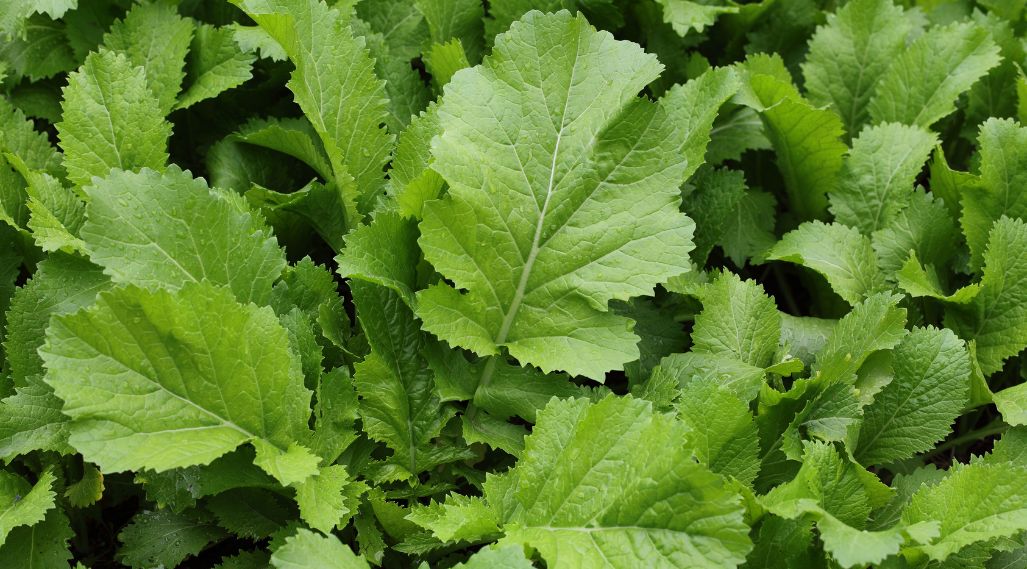
Mustard greens belong to the Brassica family. They have a slightly bitter and peppery flavor.
Popular mustard greens varieties
Green wave mustard greens have deeply serrated leaves and a spicy flavor.
Red giant mustard greens have large, frilly leaves with a purple or reddish hue. They have a milder taste compared to some other varieties.
Mizuna mustard greens have feathery leaves and a mild, slightly peppery flavor. They are often used in Japanese cuisine.
Tendergreen mustard greens have smooth, rounded leaves and a mild flavor. They are known for their tenderness and versatility in cooking.
Ways to use mustard greens
Mustard greens can be enjoyed raw in salads, although their strong flavor is best balanced with milder greens. Cooking methods such as sautéing, steaming, boiling, or braising help to mellow their bitterness and tenderize the leaves. Use in soups, stews, stir-fries, and side dishes.
Storing mustard greens
Refrigerator: Store rinsed and dried greens in a bag or container for about a week.
Freezer: We suggest blanching mustard greens before freezing.

As you can see, the world of leafy greens is wonderful! Now that you know a bit about how to select, store, and use them, we’ll leaf you alone to add a few new greens to your shopping list.
If you’re ready to embrace these dark leafy greens and want some guidance, yummy recipes, or easy-to-follow meal plans, sign up for a free trial of Clean Food Dirty Girl. You’ll have instant access so you can get started right away. Greens are just the beginning of this beautiful journey.
Sources & more information
Love the food that loves you back
Get instant access to thousands of plant-based recipes and meal plans, no credit card or perfection required.

